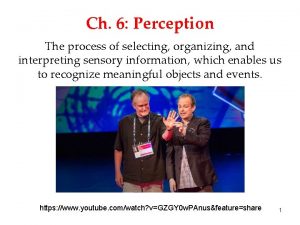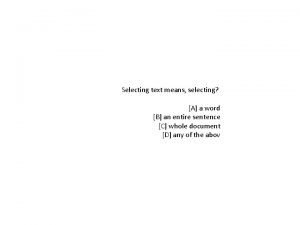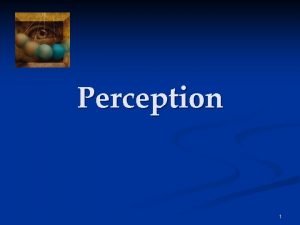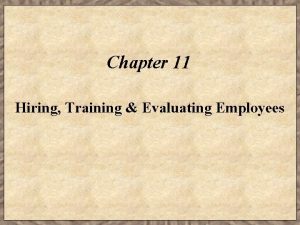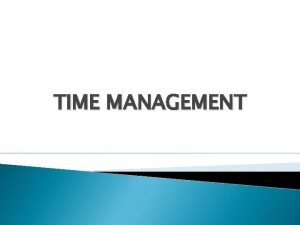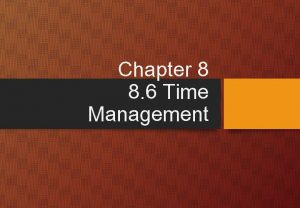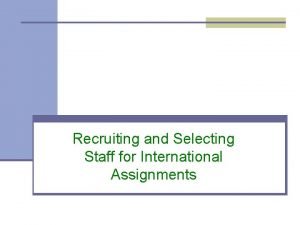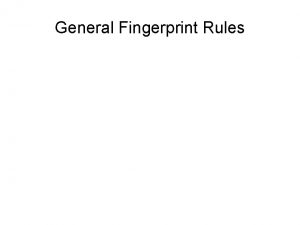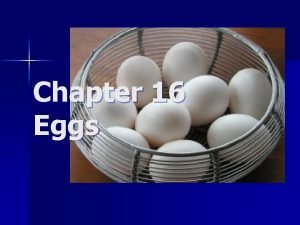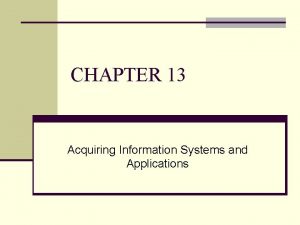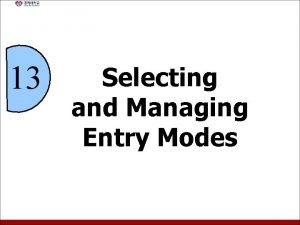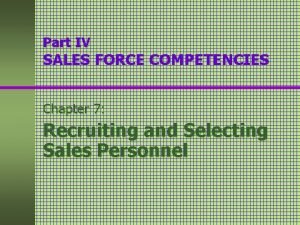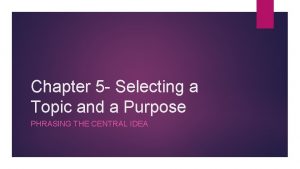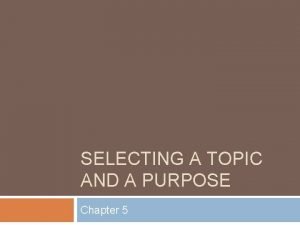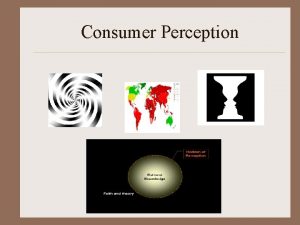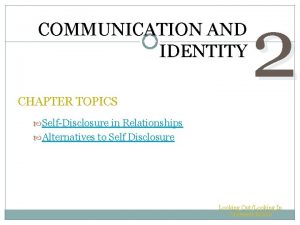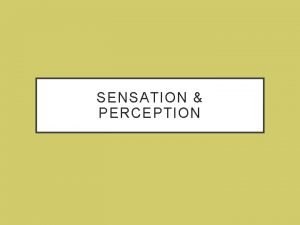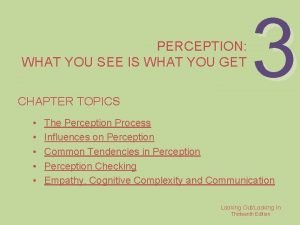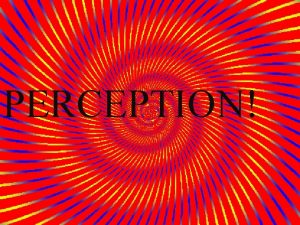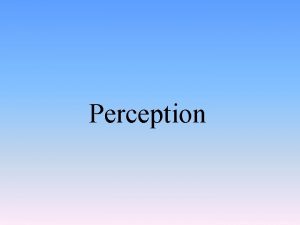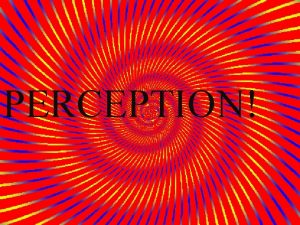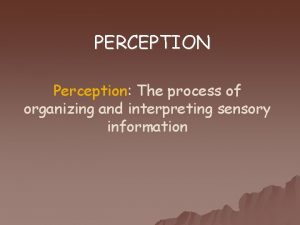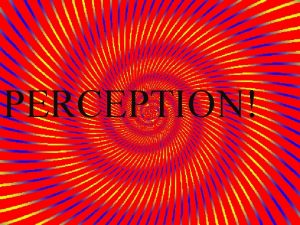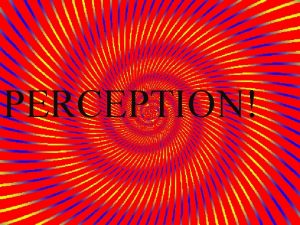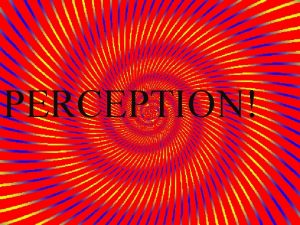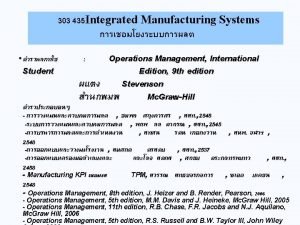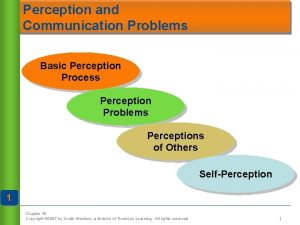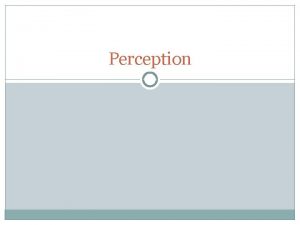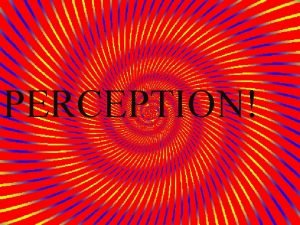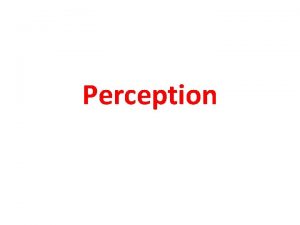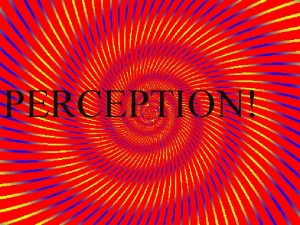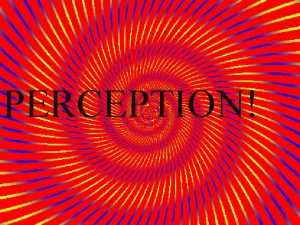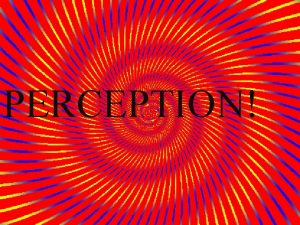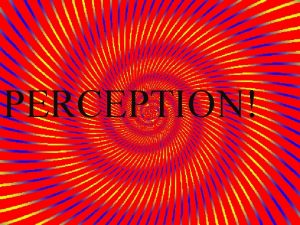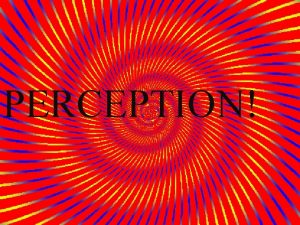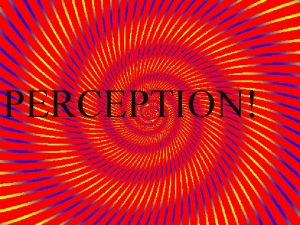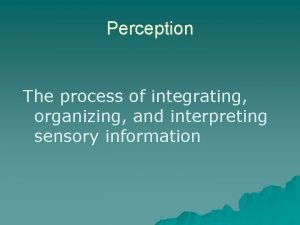PERCEPTION PERCEPTION The process of selecting organizing and























- Slides: 23

PERCEPTION

PERCEPTION The process of selecting, organizing, and interpreting sensory information, which enables us to recognize meaningful objects and events. 2

SELECTIVE ATTENTION Perceptions about objects change from moment to moment. We can perceive different forms of the Necker cube; however, we can only pay attention to one aspect of the object at a time. Necker Cube 3

Inattentional Blindness

INATTENTIONAL BLINDNESS Daniel Simons, University of Illinois Inattentional blindness refers to the inability to see an object or a person in our midst. Simmons & Chabris (1999) showed that half of the observers failed to see the gorilla-suited assistant in a ball passing game. 5

Change Blindness 2 Change Blindness 3 Color Change Card Trick

CHANGE BLINDNESS Change blindness is a form of inattentional blindness in which two-thirds of individuals giving directions failed to notice a change in the individual asking for directions. © 1998 Psychonomic Society Inc. Image provided courtesy of Daniel J. Simmons. 7

PERCEPTUAL ORGANIZATION When vision competes with our other senses, vision usually wins – a phenomena called visual capture. How do we form meaningful perceptions from sensory information? We organize it. Gestalt psychologists showed that a figure formed a “whole” different than its surroundings. 8

GESTALT PRINCIPLES • Proximity: when we see a number of similar objects, we tend to perceive them as groups or sets • Similarity: When similar and dissimilar objects are mingled, we see the similar objects as groups

GESTALT PRINCIPLES • Continuity: we tend to see continuous patterns, not disrupted ones • Simplicity: We see the simplest shapes possible • Closure: when we see a familiar pattern or shape with some missing parts, we fill in the gaps


FORM (FIGURE-GROUND) PERCEPTION Organization of the visual field into objects (figures) that stand out from their surroundings (ground). Time Savings Suggestion, © 2003 Roger Sheperd. 12

FIGURE-GROUND PERCEPTION • Figure-Ground perception is important to hearing as well as vision. • Example: Listening to one voice in a noisy, crowded room.

COLOR BLINDNESS Genetic disorder in which people are blind to green or red colors. This supports the Trichromatic theory. Ishihara Test 14

VISUAL INFORMATION PROCESSING Opponent-Process Theory- opposing retinal processes enable color vision “ON” “OFF” red green red blue yellow blue black white black

OPPONENT COLORS Gaze at the middle of the flag for about 30 seconds. When it disappears, stare at the dot and report whether or not you see Britain's flag. 16







 Perception
Perception Selecting text means selecting
Selecting text means selecting Selecting organizing and interpreting information
Selecting organizing and interpreting information Hiring training and evaluating employees
Hiring training and evaluating employees Time management is the process of organizing and planning
Time management is the process of organizing and planning 8+8+8 time management
8+8+8 time management The periodic table displays the symbols and
The periodic table displays the symbols and Selection criteria for international assignments
Selection criteria for international assignments Rules in locating delta
Rules in locating delta Identification of the system for development
Identification of the system for development Chapter 17 eggs selecting and storing eggs
Chapter 17 eggs selecting and storing eggs Strategies for acquiring it applications
Strategies for acquiring it applications Selecting and managing entry modes
Selecting and managing entry modes Recruiting and selecting sales personnel
Recruiting and selecting sales personnel Specific purpose statement
Specific purpose statement Chapter 5 selecting a topic and a purpose
Chapter 5 selecting a topic and a purpose Specific purpose statements
Specific purpose statements What affects perception
What affects perception Perception checking process
Perception checking process Process of perception
Process of perception Consumer perception process
Consumer perception process Pillow method communication
Pillow method communication Define perception
Define perception Perception checking process
Perception checking process
